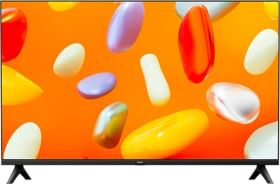The smartphone industry is dynamic with each year giving a leap into the tech world. From using processors made on 28nm a few years ago to 3nm chips, we have come a long way and of course, in a very short period when compared to the time humans have been alive.
Every year brings something new. Call it a year of touchscreens to cameras to notches and now, foldable phones. As we are entering 2024, consensus has it there are a few budding technologies that are waiting to blossom this year including the Generative AI, foldable phones market will be even bigger this time and on the contrary, processors will become smaller.
Without any further ado, let’s dive into what 2024 has in for us in terms of smartphones and technologies. Trust me, you will wait for those technologies to become massively available at the end of this listicle.
Longer Battery Life – More power perusal
One of the most common concerns people have with their smartphones is the limited or inadequate battery life. It’s true that for a long time, smartphone manufacturers haven’t kept pace with the increasing usage. For instance, iPhones and Galaxy S-series flagship devices such as Galaxy S22 5G.
Things have began to improve as OEMs now use larger battery *than before* on their devices to cope up with the increase usage and time spent on the phones. With 2024 rolling in, we expect larger batteries through smarter designs as well as powerful processors with low power consumption that will help deliver longer battery life. It’s not rocket science that without a decent battery life, your flagship phone is best kept at home plugged into a charger if it has a small battery, right?
Moreover, people with smaller batteries on their phones charge too often causing hindrance to the users, the environment, the financials, and the society at large. Thus, a larger battery will help overcome some major issues that are ruining the conditions of our society at large.
Generative AI – A thing driving you to the future
2023 saw a huge jump in generative AI. OpenAI’s ChatGPT saw an exponential increase in usage this year with ChatGPT 3.5 and ChatGPT 4.0 dropping by as iterations soon after. Samsung has announced Samsung Gauss, an all-in-one generative AI for text and media that will be a part of the Samsung Galaxy S24 Series as well.
Smartphone manufacturers understand how much of an impact AI can bring and thus, chipmakers are developing processors that can process AI-related features without any hassle. For instance, the Snapdragon 8 Gen 3 SoC pushed the envelope alongside Samsung Exynos 2400 and Dimensity 9300.
There’s no stopping back since almost every smartphone maker has integrated AI features in some form or another. Dimensity 8300 Ultra, the latest SoC for mid-range phones, supports AI. Similarly, Google Gemini AI is another example of how artificial intelligence prowess is taking shape in 2024.
Soon, we will have on-device AI processing instead of cloud processing that would not just speed up the process but make it secure for the users. We are an example of an exponential jump in mobile photography, AI voice assistants, text, and media-based generative AI to name a few. Most of these features are here and available to the public with 2024 rolling in with incremental updates to the tech.
Powerful Processors – At a cost
Phones are getting more powerful every year. Thanks to the LPDDR5X RAM and UFS 4.0, 2023 and 2024 flagship phones will devour any flagship phone from yesteryears. But it’s not just the memory (and it never will be). The processors built-in on the motherboard are the ones driving the performance by leaps and bounds. Currently, Apple A17 Pro is one of the most powerful chipsets built on a 3nm node while Snapdragon 8 Gen 3 has shown how it can make all its predecessors and even competitors feel dwarf.
Nubia’a RedMagic 9 Pro stood firm on the 3DMark Wildlife Stress Test, even crossing the benchmarks set by Apple iPhone 15 Pro’s A17 Pro. Turns out things will get even more powerful as we enter the year 2024.
Okay, I understand that people can debate whether these chipsets can sustain their performance. It is because Dimensity 9300 SoC on Vivo X100 Pro was able to sustain only 46% of its maximum performance on a stress test whereas Snapdragon 8 Gen 3 SoC on RedMagic 9 Pro reached a stability of 67%. This makes Apple’s A17 Pro far superior in terms of sustained performance.
MediaTek is dropping little cores in favor of medium and bigger ones that will help the chipset gain big time on multi-core tests which are usually demanding tasks on any phone. It remains to be seen how these chipsets operate in the long run. Hopefully, 2024 will be a year of better results, especially in terms of sustained performance and better power efficiency.
Improved Cameras – Especially Periscope
A decade ago, who would’ve believed that you could take a snapshot of the moon and see an insane detail with a phone? Well, it’s true today, isn’t it? As we move forward, mobile cameras get better and there’s no reason to believe 2024 will be any different.
We have begun to see a trend with periscope lenses because let’s face it, Apple has it, Samsung has it, Vivo X100 Pro Plus has it and even Honor has their hands of 160MP periscope lens coming soon.
Manufacturers are using both optical and digital zoom to their leverage. Oppo Find X7 Pro is speculated to introduce two 50MP periscope lenses with 3x and 6x optical zoom that should offer many high-resolution photos without compromising on the details. As of now, 2x and 3x appear to be the soft spot for many phones although we are getting better with the hype around 5x and 10x optical zooms using folded periscope telephoto sensors such as that with iPhone 15 Pro Max.
With the improving camera hardware, the software (an integral part of the equation) is getting better too. Google uses computational photography to its advantage making the Pixel lineup the finest in the Android realm. AI has found its way across major features on Android and iPhones so it’s only time cameras get their hands on AI too.
Note that it’s not like we aren’t using AI in cameras, we are, but it will improve in the coming years.
Inflated Adoption of Foldable Phones
Remember when Samsung had a public disaster when it gave units of its original Galaxy Fold to reviewers? Well, we have come a long way since then and we already have fifth-gen Galaxy Z Fold devices in the market.
We now have foldable phones from Samsung, Xiaomi, Huawei, Oppo, Vivo, OnePlus, Motorola, and Honor to name a few. Global shipments for foldable phones are forecasted to reach 48.1 million units in 2027 according to the International Data Corporation (IDC). It is projected to rise at 27.6% CAGR between 2022-2027 capturing 3.5% of the total worldwide market share which is a huge number. It is currently at 1% which is a significant jump on a global scale.
For reference, global shipments for foldable phones were 14.2 million and 21.4 million units in 2022 and 2023, respectively, accounting for both fold and flip form factors. With the increasing demand and shipment, one thing is obvious – foldable phones are en-route to get cheaper as we move forward.
With that being said, Apple has remained dormant in the foldable space and it seems we won’t be getting anything as such in 2024 as well. We do have Apple Vision Pro (retailing at $3,499) that Apple is betting on to revolutionize the smartphone industry replacing the need to own an actual phone. It is slated to arrive in early 2024 so let’s see where it is headed.
Parting Words
Even if you think any of the aforementioned innovations are still at their nascent stage at the time of reading this, it goes without saying that incremental updates have proven instrumental in bringing such technologies to maturity. What are your thoughts on the same? What other trends are you expecting to unfold in smartphones in 2024?
You can follow Smartprix on Twitter, Facebook, Instagram, and Google News. Visit smartprix.com for the most recent news, reviews, and tech guides.






































